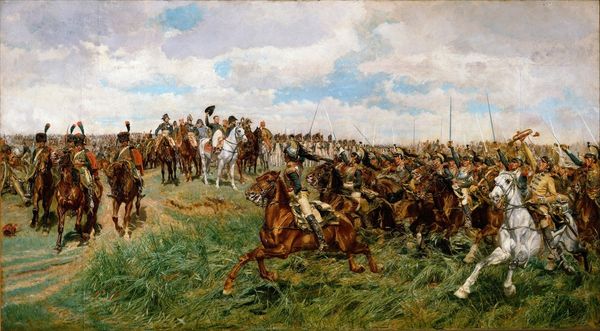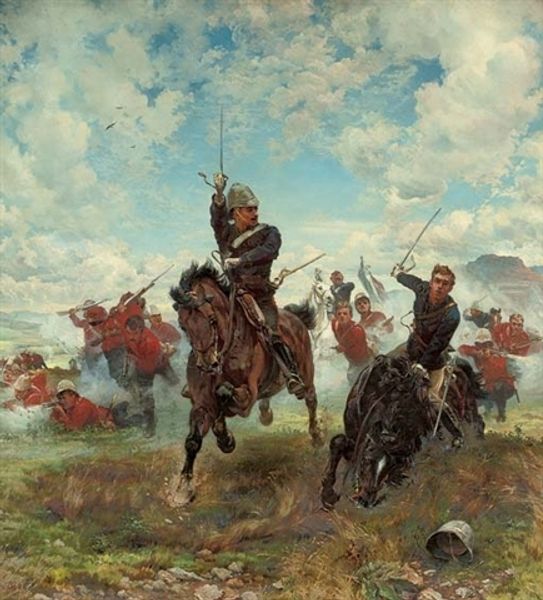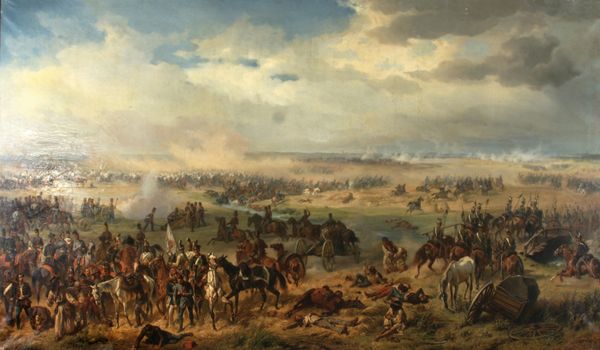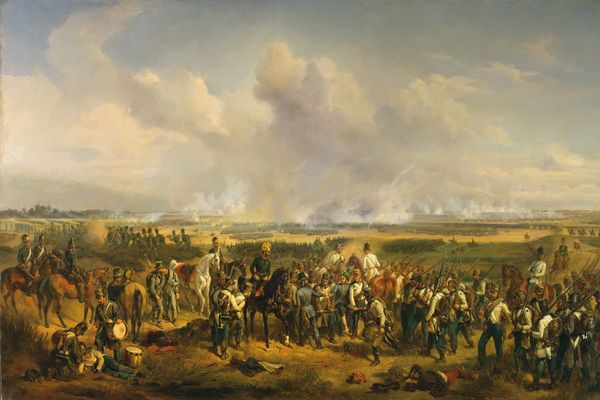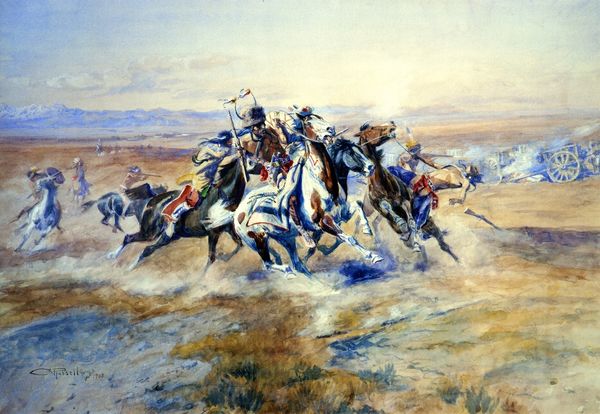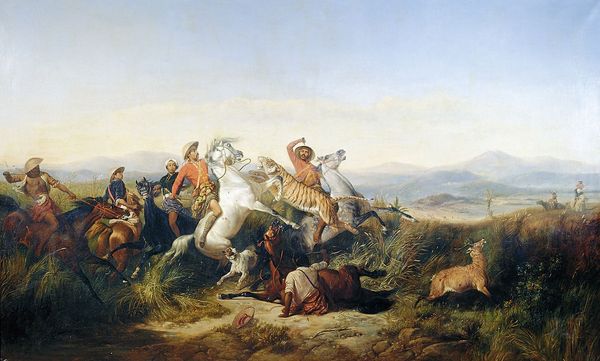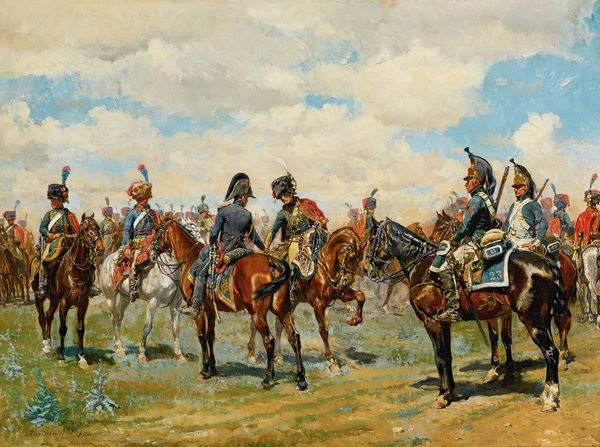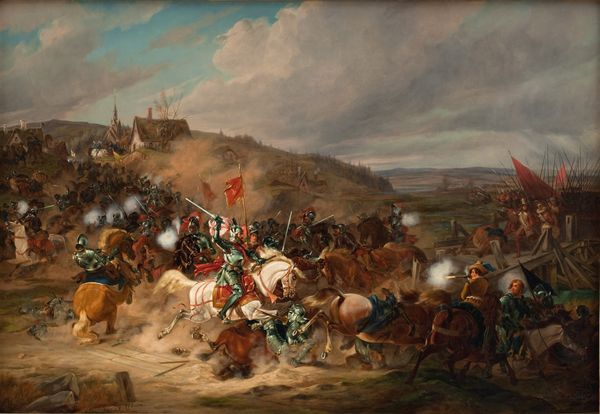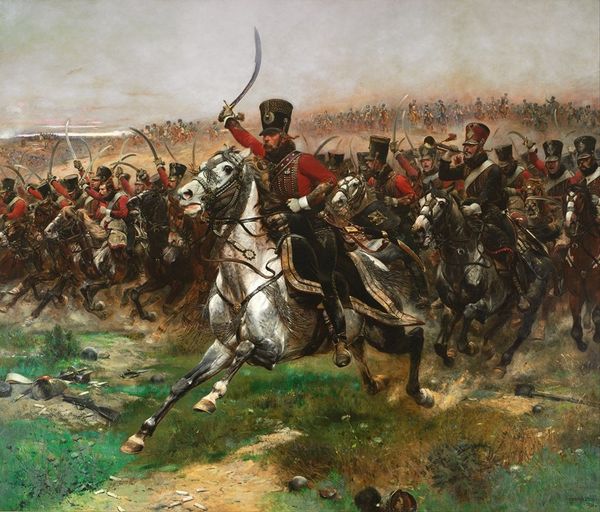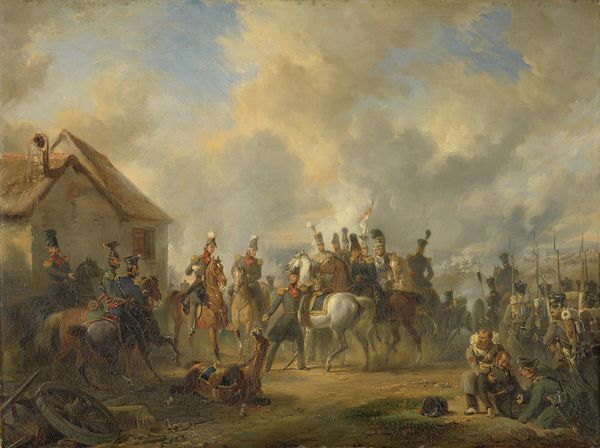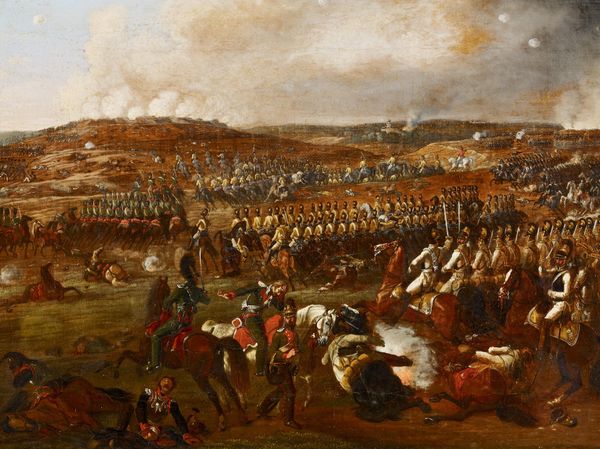
painting, oil-paint
#
baroque
#
painting
#
oil-paint
#
landscape
#
oil painting
#
genre-painting
#
history-painting
#
academic-art
Copyright: Public domain
Curator: At first glance, this image hits you with a feeling of intense observation and sweeping drama—not a fun day at the races! Editor: Precisely! Here, we’re looking at “Napoleon at Jena” by Ernest Meissonier. Although undated, its vibrant brushstrokes immortalize a pivotal moment in history, rendered skillfully in oil paint. Curator: That palette is everything, isn’t it? Cloudy, heavy with a sky that feels almost bruised above this sea of horses and…determination? Meissonier's use of color suggests a somber reflection more than celebration, wouldn't you agree? Editor: Indeed. The composition pulls you in, guiding the eye along receding lines of soldiers towards a somewhat obscured vanishing point. Look at the meticulous rendering of the uniforms versus the almost impressionistic handling of the background—a brilliant study in contrasts. The fallen figure in the foreground acts as a chilling memento mori amid the grand narrative. Curator: Oh, he’s *me* after every social event. Totally drained! But seriously, is that to make you think, like, glory has a cost? That even heroes are standing on the broken dreams—and bodies—of others? Dark. Editor: That interpretation has weight. From a formalist angle, that dark patch balances the visual weight of the mounted officers, establishing a dialogue between victory and sacrifice right on the picture plane. And that heavy sky pressing down? The atmosphere feels deliberate, adding a philosophical layer that moves beyond mere battle depiction. Curator: Right? Not your average "hooray we won!" painting. Meissonier’s not just showing, but seems to be asking something about the human price, using light and form like, *gasp*, emotional cues. Almost feels more real, less puffed-up legend, more...human cost. It's kind of refreshing, in a heavy way. Editor: Ultimately, “Napoleon at Jena,” becomes more than just a history painting. It leverages its formal elements, texture, and contrast, and composition, to make a powerful and surprisingly modern commentary on war itself. It transcends the glorification to dwell on human consequences, all achieved within what some might superficially dismiss as academic art.
Comments
No comments
Be the first to comment and join the conversation on the ultimate creative platform.

